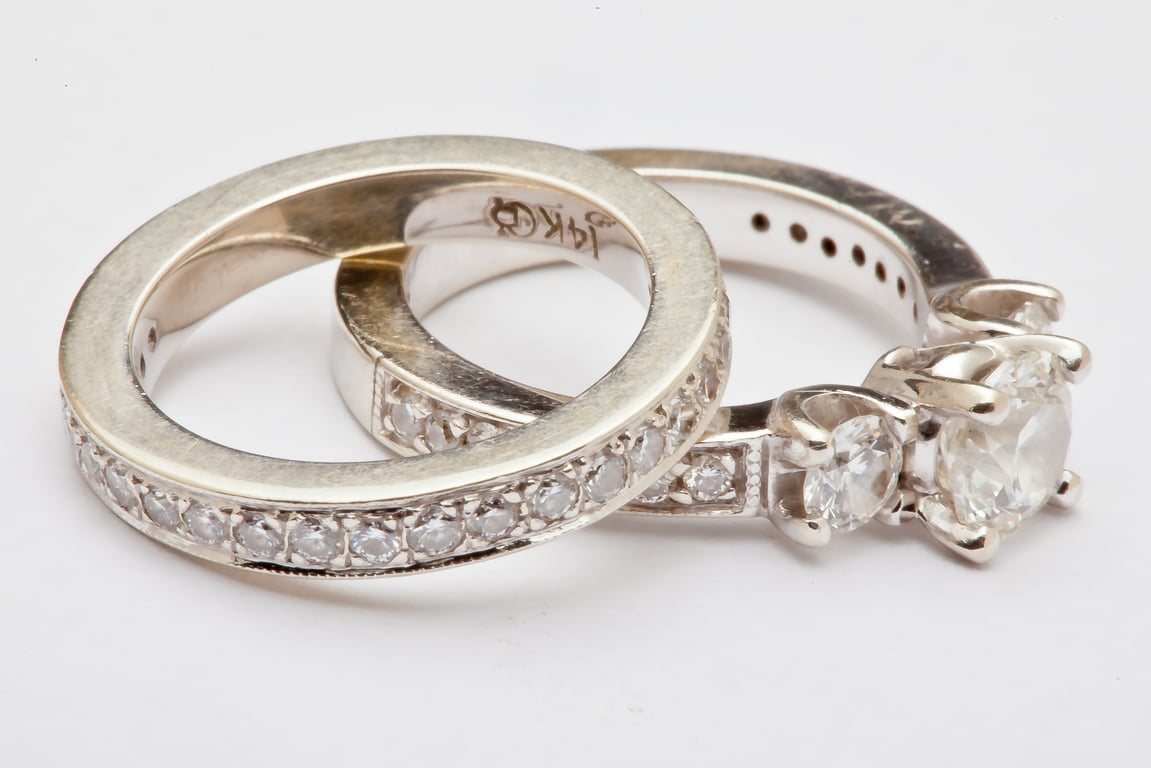The formation of natural diamonds takes about 1-3 billion years. Stones are made up of carbon atoms that are deep under the surface and begin to crystallize under the pressure of the earth's crust and elevated temperatures. When eruptions occur, the rocks lift volcanic matter upward. The very long formation process, as well as the large human resources that are required for the extraction and processing of diamonds, explain their high cost.
But thanks to modern technologies, today it is possible to obtain the desired stone in a more economical way. In the previous post of our blog, we talked about high quality moissanite engagement rings, in this article we will consider the issue of lab diamonds and their profitable.
How can a process that can take millions of years occur in a lab?
Today, many brands that have established the production of diamonds in laboratories are operating on the market. In a relatively short period of time in laboratory conditions, it is possible to create stones that are practically not inferior in their characteristics to natural counterparts. This allows for significant cost savings without compromising quality.
One of the owners of a successful start-up spoke about the production of artificial diamonds, why their use in the jewelry industry is more ethical than using mined diamonds and the price is more affordable.
A laboratory-grown diamond has no different from a natural diamond. The stone has the same chemical structure. When creating it, scientists use the same chemical processes that take place underground. Artificial diamonds have the same properties as natural ones. The only one difference between artificial and natural diamonds is that they were grown by scientists in a laboratory.
Natural and lab-grown diamonds use the same IGI certification and verification process. This process includes sorting by carat size, checking the cut, color, and clarity. Therefore, all diamonds are absolutely clear to the naked eye.
Most likely, many people have heard that natural diamond is the hardest mineral on earth. On the Mohs scale of hardness, it is estimated at 10 points out of 10. And even in this aspect, laboratory diamonds are not inferior to natural.
A grown stone can only be recognized by the special type of particles, but only a specialist can do this. Only a laboratory that has special equipment for its evaluation will undertake to recognize the origin of a diamond. In other criteria, stones have no external or physical differences.
Why Are Lab Grown Diamonds Cheaper?
To grow diamonds in the lab, scientists artificially imitate identical processes occurring in nature using high technologies. But these processes are absolutely ethical and safe for nature. The production process for artificial diamonds takes no more than 2 months.
Just because the process of creating diamonds in the labs is much simpler and faster than their mining, lab-grown stones are much cheaper. For example, the price for Great Heights company’s lab-grown diamonds is 40-60% less than the price for mined diamonds.
It should be noted that synthetic diamonds are generally small, up to 1 carat. Modern technologies allow you to grow diamonds of any size, but growing stones over 1 carat usually do not pay off.
The largest gem-quality diamond known to date was grown in 2015. The purest 10.2-carat diamond was cut from a 32.26-carat billet.
Lab-Grown Diamonds Creating Process
Scientists have developed two main technologies for the synthesis of artificial diamonds, which are not inferior in their chemical and physical characteristics to natural stones. Graphite is used as the main material to make lab-grown diamonds. These are HPHT and CVD. In the first case, a press is used, an electric current and heating up to 1500 degrees Celsius. In the second, a crystal is formed from a hot reaction gas mixture by condensing it on a special substrate, or, as experts say, on a controlled surface.
Types of Lab-Grown Diamonds
There are several types of artificial diamonds. Cubic zirconia and moissanite are in the greatest demand.
Cubic zirconia is a development of Soviet scientists who tried to obtain a stone similar to diamond in optical properties, but much less expensive. They did it, and now cubic zirconias are used both in the production of optical equipment and in the manufacture of budget jewelry. Outwardly, they look like diamonds, but they do not have such a play of color, they are much softer and can become cloudy over time. But they are very inexpensive!
Moissanite is the highest quality and most expensive diamond substitute on the market today. But here there is a confusion of concepts. Moissanite is a mineral of natural (most likely, cosmic) origin. Its crystals are extremely small and are not used in the jewelry industry. But the artificial analog of moissanite, carborundum, is much more widespread. Lab-grown moissanite is used in jewelry, for example, in moissanite wedding rings, bands, and other. Carborundum approaches diamond in hardness (9.5 on the Mohs scale) and significantly outstrips it in its ability to withstand heat. It shines even brighter than a natural diamond!
Lab-Grown Diamonds from the Great Heights
Great Heights is a brand that suggests the greatest choice of artificial diamonds in the USA. Company algorithms identify every attribute of a diamond, including the Four Cs — carat, cut, clarity, and color — to match customers with the best choice for their price.
The price difference varies depending on the size and quality of the stone. But, in any case, Great Heights offers imitation diamonds that are at least 40 percent cheaper. A relatively affordable price allows you to buy more quality jewelry. This is the knowledgeable attitude of people who are concerned about protecting the environment and against digging huge mines visible from space.














